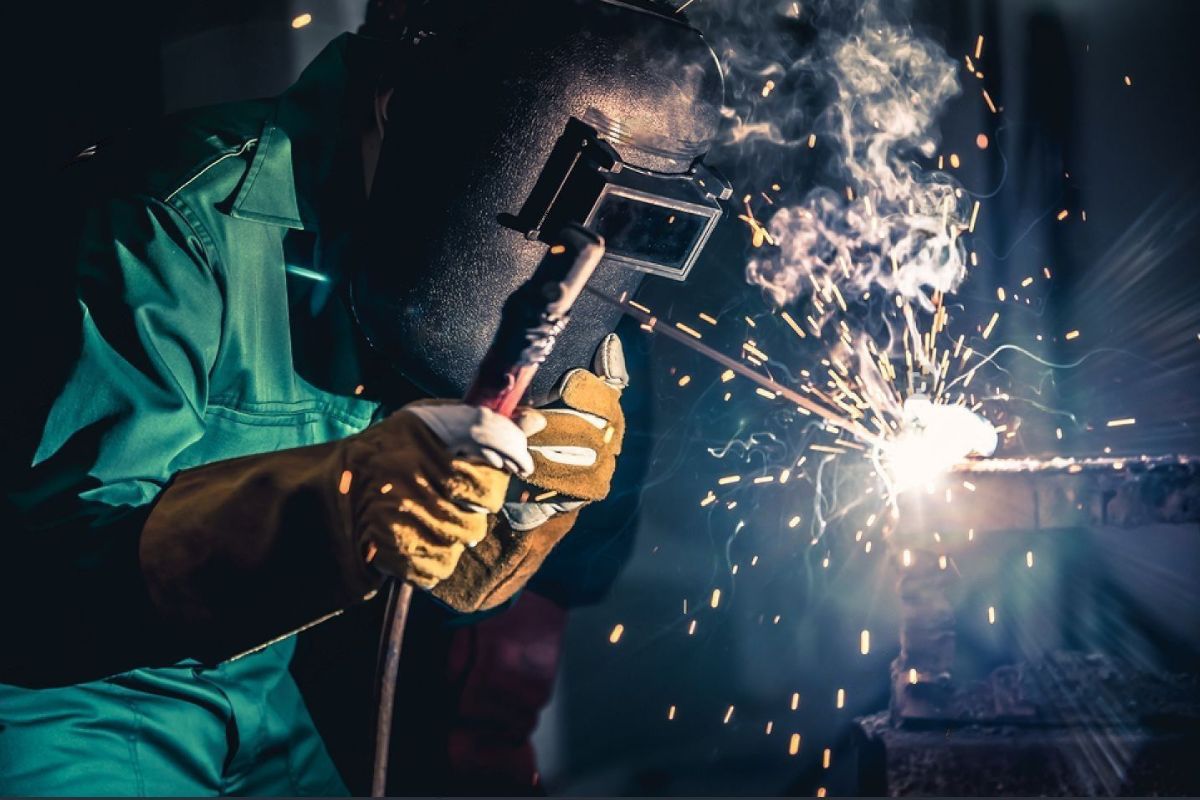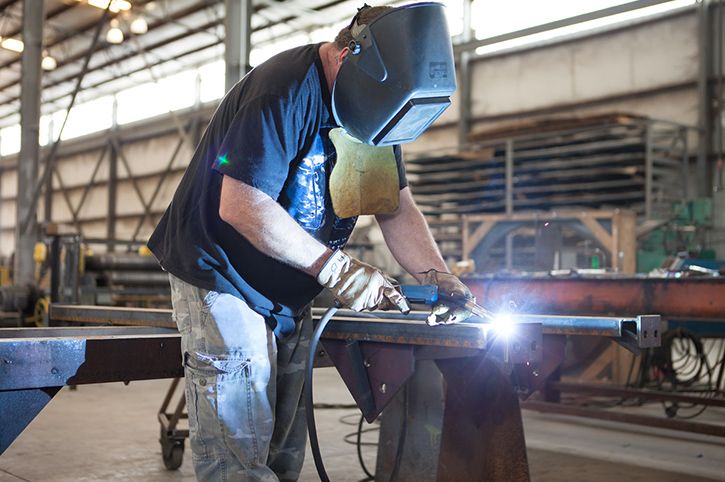Usual Welding Repair Issues and How to Address Them Effectively
Welding repair work frequently run into a variety of problems that can jeopardize the integrity of the final product. Common issues include poor infiltration, porosity, and imbalance, to name a few. Each defect offers one-of-a-kind obstacles that call for details techniques for resolution. Recognizing these problems is necessary for welders aiming to enhance their skills and outcomes. This conversation will certainly explore these common welding repair work concerns and efficient techniques to address them.
Insufficient Penetration
Poor infiltration occurs when the weld steel falls short to totally fuse with the base product, resulting in weak joints and potential architectural failings. This issue often originates from not enough warmth input, incorrect electrode angle, or improper welding speed. Welders might run into inadequate penetration due to a mistake of the needed parameters for a particular product thickness or type. Additionally, contamination on the base product's surface area can prevent reliable bonding, exacerbating the issue. To address poor penetration, welders need to assure suitable settings on their tools and preserve a clean work surface area. Regular assessment of welds is recommended to determine any type of shortages early, enabling timely corrections and the avoidance of compromised architectural stability in bonded settings up.
Porosity
Porosity is a typical defect in bonded joints that manifests as little gas bubbles caught within the weld steel. This defect can compromise the honesty of the weld, leading to lowered strength and potential failure under tension. Belgrade. Porosity generally develops from contamination, dampness, or incorrect welding strategies, which permit gases to leave right into the molten weld pool. To attend to porosity, welders should assure correct surface area preparation, keep a tidy workplace, and make use of ideal welding specifications. Additionally, selecting the appropriate filler material and protecting gas can minimize gas entrapment. Regular evaluation and testing of welds can help recognize porosity early, guaranteeing timely corrective activities are taken, thus maintaining the quality and integrity of the bonded framework
Misalignment
Imbalance in welding can arise from various aspects, including inappropriate arrangement and thermal growth. Understanding the origin is crucial for reliable resolution. A number of adjustment methods are readily available to straighten components and ensure architectural honesty.
Root causes of Misalignment
Welding imbalance typically stems from a selection of underlying issues that can compromise structural integrity. One main reason is improper fit-up of parts before welding, which can cause voids and unequal surface areas. Variants in thermal growth during the welding process can additionally cause distortion, specifically if the materials being signed up with have various coefficients of growth. Additionally, insufficient securing and fixturing might fail to hold components firmly in location, resulting in motion during welding. Badly maintained tools, including welding equipments and tools, might introduce incongruities in the weld grain, more contributing to imbalance. Lastly, operator error, coming from inadequate training or experience, can also play a considerable duty in developing misaligned welds.
Improvement Techniques Readily Available
Resolving imbalance effectively requires a mix of corrective strategies tailored to the particular problems handy. One common technique is making use of jigs or components to hold parts in the proper placement throughout welding, making certain regular placement. Additionally, pre-heating the materials can help in reducing distortion and improve fit-up. For considerable imbalance, mechanical realignment methods, such as utilizing hydraulic jacks or clamps, can be used to deal with the setting prior to welding. Post-weld warm therapy may additionally be required to ease stresses triggered by imbalance. Finally, careful assessment and adjustment throughout the configuration phase can stop imbalance issues from ending up being significant troubles, advertising a smoother welding process and improving overall architectural honesty.
Distortion
Distortion is an usual difficulty in welding that can emerge from various variables, including uneven home heating and air conditioning. Recognizing the causes of distortion is necessary for carrying out effective prevention methods. Addressing this problem not just enhances structural stability yet also boosts the general high quality of the weld.
Reasons for Distortion
When based on the extreme heat of welding, products commonly go through changes that can lead to distortion. This phenomenon mainly arises from thermal development and tightening throughout the welding process. As the weld location warms up, the product increases; upon air conditioning, it acquires, which can develop inner stresses. In enhancement, uneven heating throughout a work surface can intensify these tensions, causing warping or flexing. The kind of product additionally plays a considerable function; metals with differing thermal conductivity and coefficients of expansion might react differently, causing unpredictable distortions. Additionally, inadequate joint design and inadequate fixturing can add to misalignment throughout welding, boosting the probability of distortion. Understanding these causes is vital for reliable welding fixing and avoidance strategies.
Prevention Techniques
Effective avoidance techniques for distortion throughout welding concentrate on regulating warmth input and ensuring appropriate joint layout. Keeping a consistent warm input helps to lessen thermal growth and contraction, which can result in distortion. Using techniques such as preheating the workpiece can additionally lower the temperature level gradient, promoting consistent heating. Additionally, selecting ideal joint styles, such as T-joints or lap joints, can improve stability and minimize stress and anxiety concentrations. Executing correct fixturing to secure the work surfaces in area additionally help in maintaining placement throughout the welding process. Staggered welding sequences can disperse warm more uniformly, stopping local distortion. By using these strategies, welders can considerably reduce the likelihood of distortion and boost the general quality of their welds.
Splitting
Cracking is an usual concern come across in welding repair work, usually resulting from various factors such as inappropriate cooling prices, welding steel to aluminum product selection, or inadequate joint prep work. The blog here occurrence of splits can substantially compromise the integrity of the weld, leading to prospective failures during procedure. To address this issue, welders should first analyze the origin, ensuring that products are compatible and properly picked for the details application. Furthermore, regulating the air conditioning rate during the welding process is necessary; fast cooling can cause stress and anxiety and result in splitting. Correct joint layout and prep work additionally add to reducing the threat. Implementing these approaches can enhance weld quality and durability, eventually lowering the probability of breaking in ended up weldments.

Insufficient Fusion
A substantial concern in welding repair services is insufficient blend, which takes place when the weld steel does not sufficiently bond with the base material or previous weld passes - Belgrade. This problem can cause weaknesses in the joint, potentially endangering the honesty of the welded framework. Variables adding to insufficient combination include not enough warm input, inappropriate welding strategy, and contamination of the surface areas being joined. To address this problem successfully, welders ought to assure appropriate pre-weld cleansing and surface preparation, along with adjust their welding parameters to achieve adequate infiltration and combination. Regular evaluation throughout the welding process can additionally help determine incomplete combination early, allowing for prompt corrective actions to boost the overall top quality of the weld
Overheating
While welding repairs can enhance structural honesty, overheating provides a substantial difficulty that can result in product deterioration. Excessive warmth during welding can alter the mechanical residential properties of steels, causing lowered stamina, increased brittleness, and warping. This sensation is particularly vital in high-stress applications where structural dependability is critical. Recognizing getting too hot can include aesthetic assessments for staining or distortion, as well as checking temperature level throughout the welding process. To mitigate the threats connected with getting too hot, welders should employ proper methods, such as managing warmth input, readjusting travel rate, and making use of suitable filler products. In addition, carrying out pre- and post-weld warmth treatments can aid restore product residential or commercial properties and enhance the general high quality of the repair work, ensuring long-term efficiency and security.
Often Asked Questions
What Are the Usual Indicators of a Welding Issue?

How Can I Evaluate My Welds for Top quality?
To check welds for high quality, one can utilize visual assessments, ultrasonic screening, and radiographic techniques. Each strategy ensures welding blankets structural integrity, identifies flaws, and confirms adherence to defined standards, eventually improving the dependability of the bonded joints.
What Safety and security Preventative Measures Should I Take While Welding?
When welding, one should prioritize safety by wearing appropriate individual safety tools, making certain proper air flow, safeguarding flammable products away, keeping a tidy work space, and knowing environments to prevent injuries and accidents.
Can I Fix a Weld Without Redesigning the Entire Joint?
Repairing a weld without redesigning the whole joint is possible, depending upon the damage (Belgrade Welding). Methods such as grinding, including filler product, or making use of a welding process can properly address details problems while preserving the bordering structure
What Tools Are Vital for Reliable Welding Services?
Crucial tools for reliable welding repair services consist of a welding equipment, wire brush, grinder, protective gear, clamps, and filler materials. Each device plays an important duty in guaranteeing high quality and safety during the repair service process. Porosity normally arises from contamination, moisture, or incorrect welding strategies, which allow gases to get away right into the molten weld swimming pool. Poorly kept tools, including welding equipments and tools, might introduce disparities in the weld grain, more adding to misalignment. When subjected to the extreme heat of welding, materials frequently undertake modifications that can lead to distortion. Cracking is an usual concern encountered in welding fixings, commonly resulting from numerous factors such as improper cooling prices, product option, or insufficient joint prep work. A substantial concern in welding fixings is insufficient fusion, which occurs when the weld metal does not appropriately bond with the base material or previous weld passes.